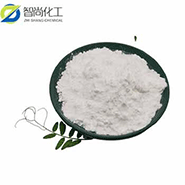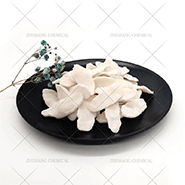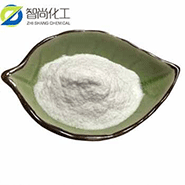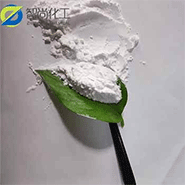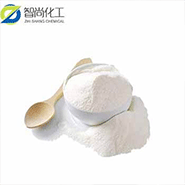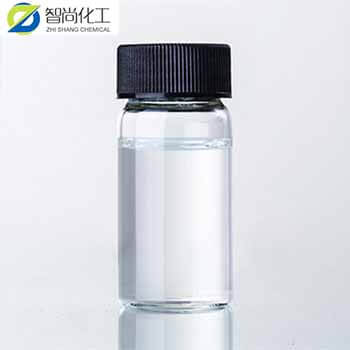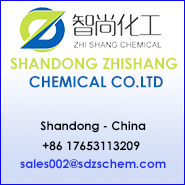
Shandong Zhishang Chemical Co., Ltd.
Click Here To EMAIL INQUIRYContact: William - Trusted Chemical Supplier
Phone: +86-(0)-17653113209 | Skype: live:.cid.a2fdf8583f9417e0 | QQ: 3387238153

Address: Hisense Intelligence Vally, No.2116 of Phoeix Road, High-tech Zone, Jinan, Shandong 250000, China
E-Mail:
Web: https://www.zhishangchemical.com
Inquiry
Product Videos: Hide/Show >>
Shandong Zhishang Chemical Co., Ltd. is a chemical enterprise combined into research and development, production and sales. We are a manufacturer of Organic Intermediates, Food Additives, Inorganic Chemistry Products, Dyestuffs & Pigments, Fragrance and Spices. We are an ISO 9001 and ISO 2000 certified company.
Quaternary ammonium salt is a compound in which all four hydrogen atoms in ammonium ion are replaced by hydrocarbon groups. The general formula is R4NX, in which the four hydrocarbon groups R can be the same or different. X is mostly halogen anions (F-, Cl-, Br-, I-), but also acid radicals (such as HSO4-, RCOO-). Quaternary ammonium salts are similar in nature to Inorganic Salts, easily soluble in water, and the aqueous solution can conduct electricity. It is mainly produced by the reaction of ammonia or amine with halogenated alkanes. This is mainly used in textile printing and dyeing industry, this kind of softener has softness, antistatic, sterilization and anti-yellowing properties. The dosage is small, the effect is good, the preparation is convenient, and the compatibility is good.
Cosmetics are chemical mixtures made of natural, synthetic or extracted substances with different functions as raw materials and processed through production processes such as heating, stirring and emulsification.
Detergent raw materials is a combination of surfactants and some detergent auxiliary ingredients according to a certain formula. Detergent raw materials mainly include: solvents (water or organic solvents), surfactants, auxiliary agents, bleaching agents, fluorescent brighteners and small materials (auxiliary agents). The so-called auxiliaries are actually the traditional names, and in reality they may be the main components of detergents. There may also be synergistic effects between some raw materials, and many detergent raw materials have versatility. The so-called small ingredients, such as flavors, pigments, and enzymes, are added for the purpose of enhancing washing or improving the appearance of the product.
Pharmaceutical Raw Materials (APIs)
Our Pharmaceutical Raw Materials include :
| Sr.No | Product Name | CAS. No |
| 1 | Thiophene/Thiofuran | 110-02-1 |
| 2 | Ethyl Paraben | 120-47-8 |
| 3 | Magnesium Orotate | 34717-03-8 |
| 4 | 1-(2-Methoxyphenyl)piperazine hydrochloride | 5464-78-8 |
| 5 | Propylene glycol | 57-55-6 |
| 6 | Ethylene Glycol | 107-21-1 |
| 7 | Diethyl sulfate | 64-67-5 |
| 8 | 2′-Fluoroacetophenone | 445-27-2 |
| 9 | Sodium Phytate | 14306-25-3 |
| 10 | L-tyrosine Tyrosine | 147-85-3 |
| 11 | Calcium Lignosulfonate | 8061-52-7 |
| 12 | DL-Thioctic Acid | 1077-28-7 |
Additives
Additives include Feed Additives, Food Additives, Concrete Additives, Color Additives, Coolant Additives, Polymer Additives, Plastic Additives, and Engine Oil Additives. Our products include Sodium lactate, Polyglyceryl Ester Of Fatty Acid (PGFE), Gellan Gum, Magnesium Orotate, Sodium Trimetaphosphate, Potassium Acetate, and Magnesium Hydroxide. We also offer Polyethylene-polypropylene glycol, Hydroxyapatite, Dibenzoyl Methane, and Zinc methionine.
Sweetening agent refer to food additives that can impart sweetness to soft drinks. Sweetening agent can be divided into nutritive sweetening agent and non-nutritive sweetening agent according to their nutritional value; according to their sweetness, they can be divided into low-sweetness sweetening agent and high-sweetness sweetening agent; according to their source Divided into natural sweetening agent and synthetic sweetening agent(artificial sweetening agents).
Inorganic Salts
Inorganic salt (mineral salt) is the salt of inorganic compound. We offer different types of Inorganic Salts such as Silver Chloride, Ruthenium Chloride, Calcium Lignosulfonate, Benzyltributylammonium chloride, Zirconium Oxychloride, and Sodium hydride. We also offer Zirconium(IV hydrogenphosphate, Potassium phosphate tribasic hydrate, Trichlorosilane, and Zinc sulfate monohydrate.
Flavors and fragrances refer to substances with aromatic odors. Most cakes and biscuits can use spices and flavors to improve or enhance aromas and fragrances. These flavors and spices are called flavoring agents or flavoring agents. Spices can be divided into natural flavors and artificial flavors according to different sources. Natural flavors also include animal and plant flavors. Plant flavors are mainly used in food production. Artificial fragrances are compounds obtained from raw materials such as petrochemical products and coal tar products through synthetic reactions. Essence is a compound perfume made by mixing several or dozens of perfumes with diluents. Strictly speaking, spices generally refer to raw materials used as flavor components and are rarely directly used in food. Flavor is an important raw material used directly to increase the flavor of food.
Dyestuffs And Pigments
Dyestuffs refer to organic substances that can color fibers and other materials firmly. There are many types of dyes, which can be divided into natural dyes (such as vegetable dyes, animal dyes, mineral dyes, etc.) and synthetic dyes (or artificial dyes) according to their sources. According to the molecular structure, it can be divided into azo dyes, anthraquinone dyes, phthalocyanine dyes, arylmethane dyes, nitro dyes and so on. According to the application method, it is divided into acid dyes, basic dyes, sulfur dyes, reactive dyes, disperse dyes, direct dyes, etc. Dyes have colors, but colored substances are not necessarily dyes. The dye must have a chromophore and an auxiliary chromophore. The dye in the ink should also have water-soluble groups such as sulfonic acid groups.
| • | a,a'-Dichloro-o-xylene (CAS: 612-12-4) | • | a-Ketoglutaric Acid (CAS: 328-50-7) | • | a-Methyl-3,4-Methylenedioxyhydrocinnamic Aldehyde (CAS: 1205-17-0) |
| • | Abacavir Sulfate (CAS: 188062-50-2) | • | Abamectin | • | Abietic Acid (CAS: 514-10-3) |
| • | Abiraterone (CAS: 154229-19-3) | • | Abiraterone acetate (CAS: 154229-18-2) | • | ABTS (CAS: 30931-67-0) |
| • | Acacetin (CAS: 480-44-4) | • | ACACETIN-7-GLUCOSIDE (CAS: 4291-60-5) | • | Acacia |
| • | Acepromazine Maleate BP Vet. (CAS: 3598-37-6) | • | Acesulfame (CAS: 33665-90-6) | • | Acesulfame Potassium |
| • | Acetal (CAS: 105-57-7) | • | Acetamidine Hydrochloride (CAS: 124-42-5) | • | Acetaminophen (CAS: 103-90-2) |
| • | Acetamiprid (CAS: 135410-20-7) | • | Acetanilide (CAS: 103-84-4) | • | Acetic Acid (CAS: 64-19-7) |
| • | Acetic Acid Benzyl Ester (CAS: 140-11-4) | • | Acetoacetanilide (CAS: 102-01-2) | • | Acetoacetic Ester (CAS: 141-97-9) |
| • | Acetoacetyl O-Anisidine (CAS: 92-15-9) | • | ACETOIN (CAS: 51555-24-9) | • | Acetophenone (CAS: 98-86-2) |
| • | Acetovanillone (CAS: 498-02-2) | • | Acetyl Acetone (2 4-Pentanedione) (CAS: 123-54-6) | • | Acetyl Bromide (CAS: 506-96-7) |
| • | Acetyl Cedrene (CAS: 32388-55-9) | • | Acetyl chloride | • | Acetyl Cysteine (CAS: 616-91-1) |
| • | Acetyl Decapeptide-3 (CAS: 935288-50-9) | • | Acetyl hexapeptide 38 (CAS: 1400634-44-7) | • | Acetyl hexapeptide-3 (CAS: 616204-22-9) |
| • | Acetyl trans-resveratrol (CAS: 42206-94-0) | • | Acetyl Tributyl Citrate (CAS: 77-90-7) | • | Acetyl-L-Carnitine HCL (CAS: 5080-50-2) |
| • | Acetylaconitine (CAS: 77181-26-1) | • | Acetylchloride (CAS: 75-36-5) | • | Acetylene Black (CAS: 1333-86-4) |
| • | Acetylspiramycin (CAS: 24916-51-6) | • | Acid Black 210 (CAS: 99576-15-5) | • | Acid Black 234 (CAS: 157577-99-6) |
| • | Acid Blue 161 (CAS: 12392-64-2) | • | Acid BLUE 193 | • | Acid Naphthol Red 6B (CAS: 4321-69-1) |
| • | Acid Violet 43 (CAS: 4430-18-6) | • | ACID VIOLET 7 (CAS: 4197-09-5) | • | Acitretin (CAS: 55079-83-9) |
| • | ACLONIFEN (CAS: 74070-45-5) | • | Acrylamide (CAS: 79-06-1) | • | Acrylic Acid (CAS: 79-10-7) |
| • | Acrylic Polymers (CAS: 9003-01-4) | • | Acrylonitrile Polymer (CAS: 25014-41-9) | • | Acryloyl Chloride (CAS: 814-68-6) |
| • | Active Extra Fine Calcium Hydroxide (CAS: 1305-62-0) | • | Acyclovir (CAS: 59277-89-3) | • | Adefovir (CAS: 106941-25-7) |
| • | Ademetionine 1,4-Butanedisulfonate | • | Adenine hydrochloride hydrate (CAS: 6055-72-7) | • | Adenine Sulfate (CAS: 321-30-2) |
| • | Adenosine (CAS: 58-61-7) | • | Adenosine 5'-diphosphate disodium salt (CAS: 16178-48-6) | • | Adenosine 5'-monophosphate disodium salt (CAS: 4578-31-8) |
| • | Adenosine 5'-monophosphate sodium salt (CAS: 13474-03-8) | • | ADENOSINE 5'-TRIPHOSPHONATE DISODIUM SALT (CAS: 51763-61-2) | • | Adenosine Cyclophosphate (CAS: 60-92-4) |
| • | Adenosine triphosphate disodium salt (CAS: 51963-61-2) | • | Adenosine-5-Monophosphate (CAS: 61-19-8) | • | Adipic Acid (CAS: 124-04-9) |
| • | Adipic acid di-n-octyl ester (CAS: 123-79-5) | • | Adipic Dihydrazide (CAS: 1071-93-8) | • | Adrafinil (CAS: 63547-13-7) |
| • | AESCIN (CAS: 6805-41-0) | • | Agar (CAS: 9002-18-0) | • | Agarose (CAS: 9012-36-6) |
| • | alanine (CAS: 2420-11-3) | • | Alanine (CAS: 100450-53-1) | • | Alarelin (CAS: 79561-22-1) |
| • | Albendazole (CAS: 54965-21-8) | • | ALBENDAZOLE S-OXIDE (CAS: 122063-18-7) | • | ALCOHOL DEHYDROGENASE (CAS: 253849-52-4) |
| • | Alcohols,C12-15, ethoxylated (CAS: 68131-39-5) | • | Aldehyde C-10 (N-Decanal) (CAS: 112-31-2) | • | Aldehyde C-12 Lauric (CAS: 112-54-9) |
| • | Aldehyde C-14 (CAS: 104-67-6) | • | Aldehyde C-14 (Gamma Undecalactone) (CAS: 124-25-4) | • | Aldehyde C-18 (CAS: 104-61-0) |
| • | Aldehyde C16 (CAS: 77-83-8) | • | Alitame (CAS: 80863-62-3) | • | Alizapride Hydrochloride (CAS: 59338-87-3) |
| • | Alizarin complexone (CAS: 3952-78-1) | • | Alkali Lignin (CAS: 105859-97-0) | • | All-Trans-Retinal (CAS: 116-31-4) |
| • | Allantoin (CAS: 97-59-6) | • | Allitridum (CAS: 539-86-6) | • | Allomaleic Acid (CAS: 110-17-8) |
| • | Allyl Bromide (CAS: 106-95-6) | ||||








